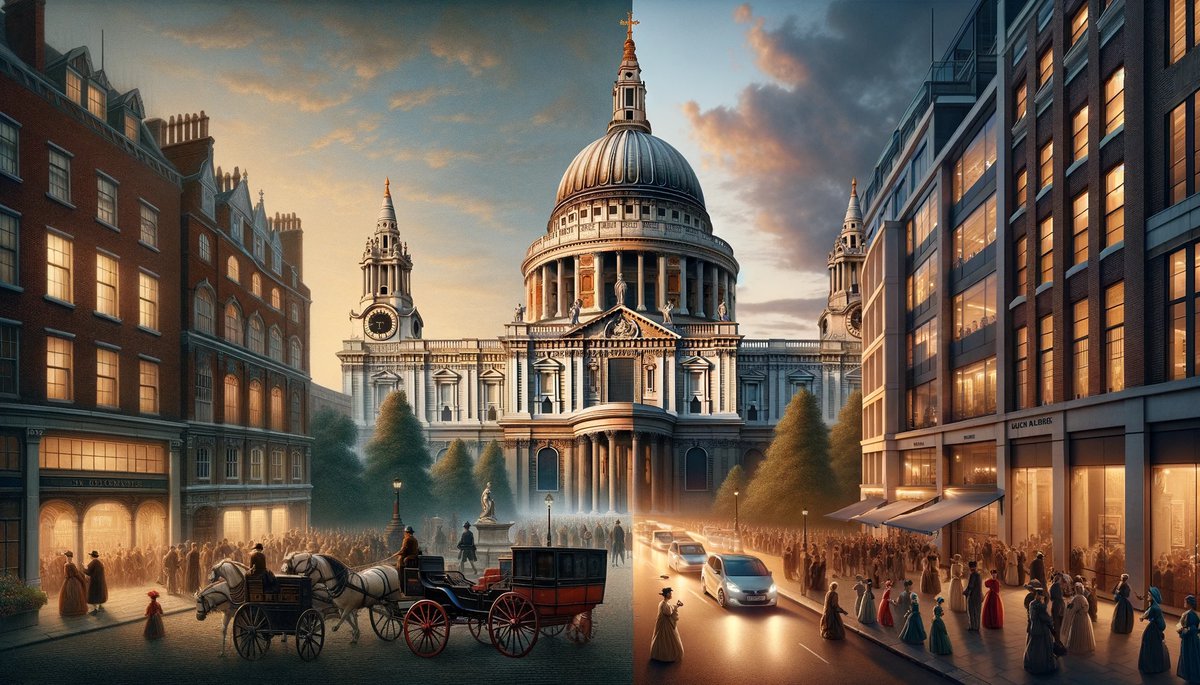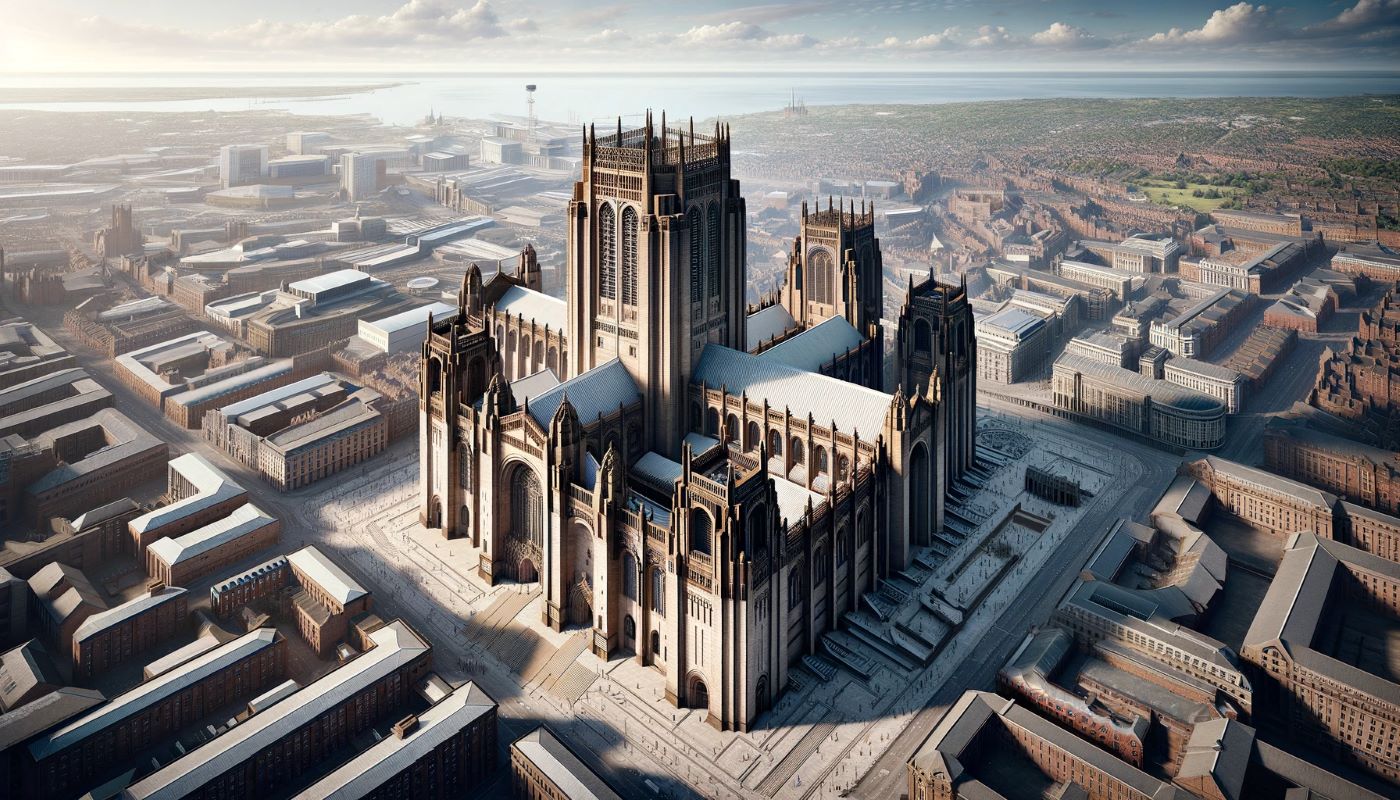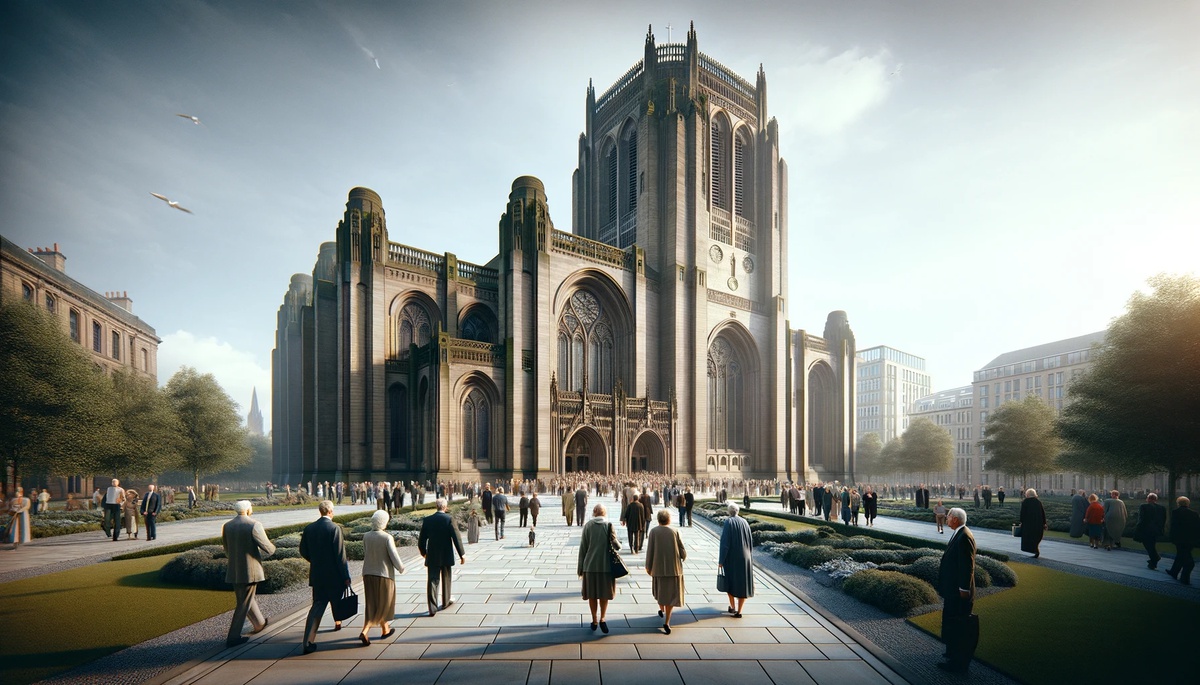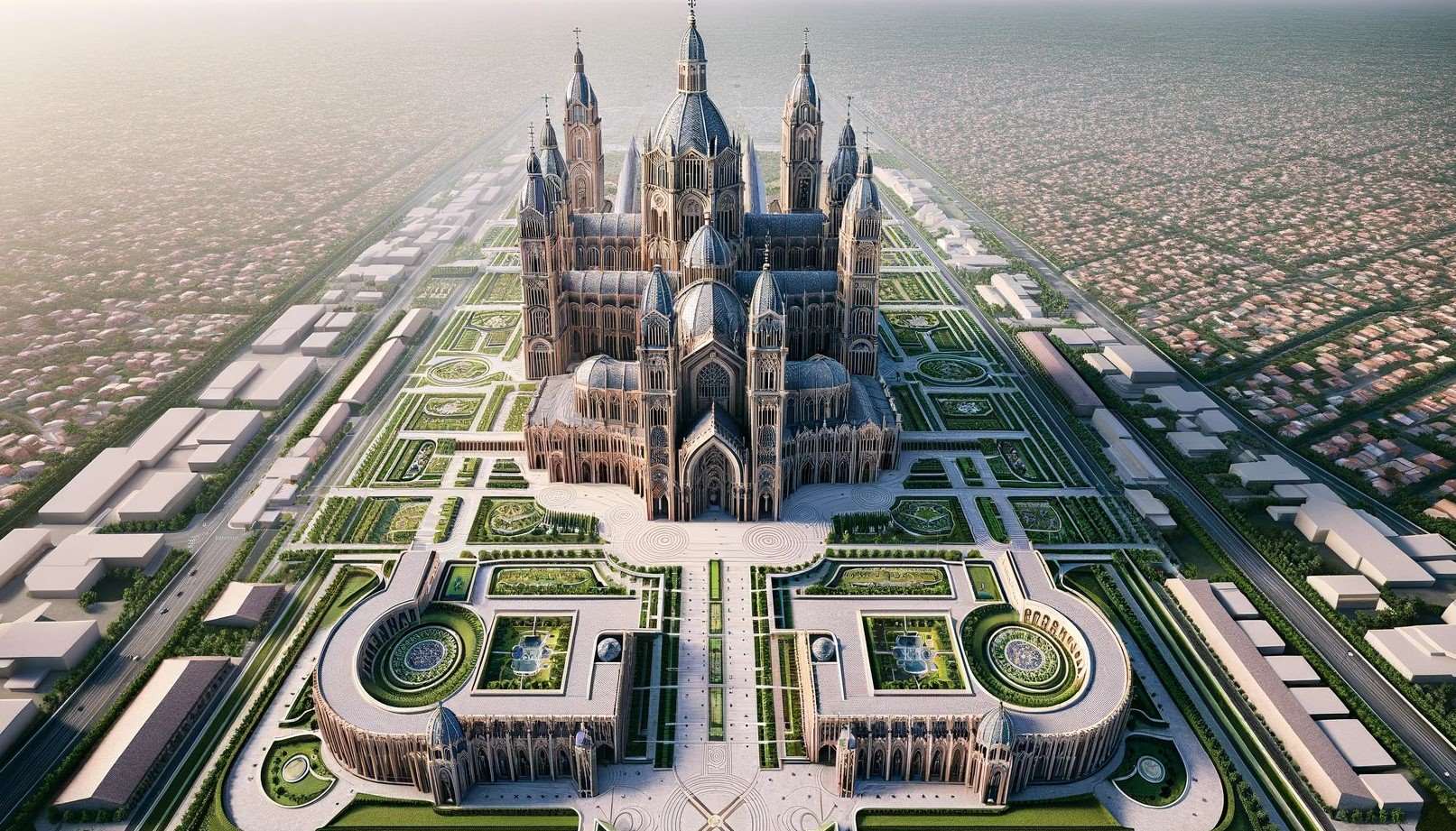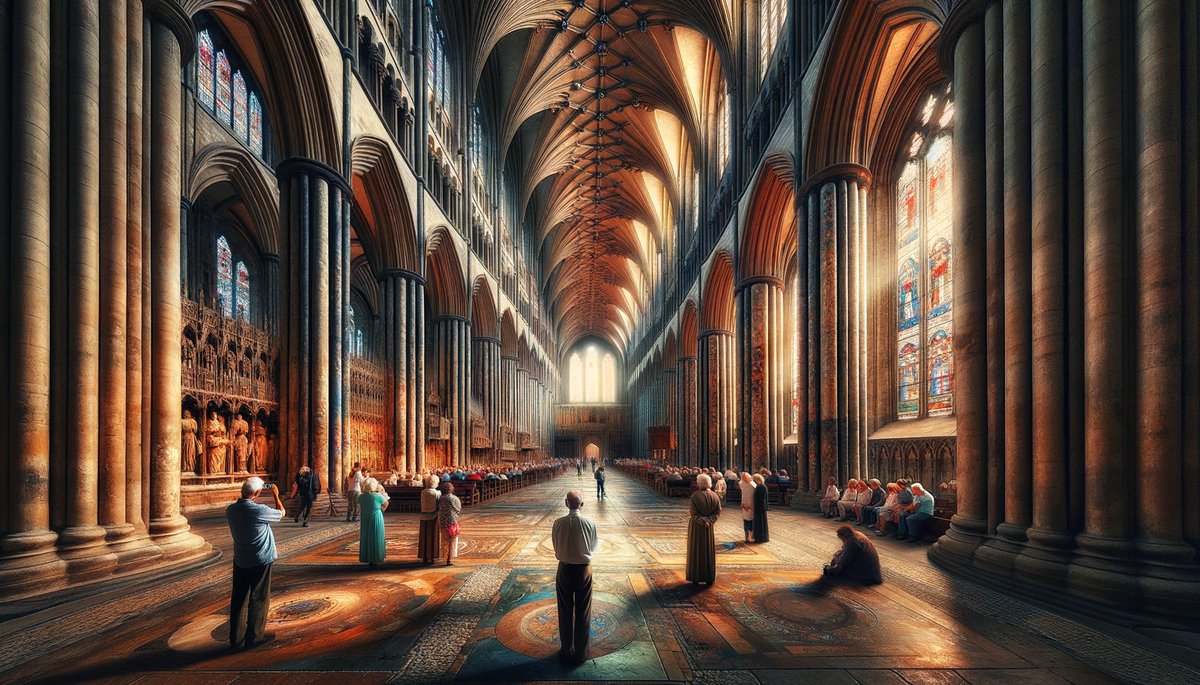Home>Arts and Culture>What Does A Cathedral Look Like


Arts and Culture
What Does A Cathedral Look Like
Published: February 15, 2024
Peter Smith, Editorial Director at Christian.net, combines deep insights into faith, politics, and culture to lead content creation that resonates widely. Awarded for his contributions to religious discourse, he previously headed a major organization for religious communicators, enhancing dialogue on faith's societal impacts.
Discover the beauty and grandeur of cathedrals in this insightful exploration of architecture, history, and art. Learn what makes these iconic structures so captivating. Ideal for art and culture enthusiasts.
(Many of the links in this article redirect to a specific reviewed product. Your purchase of these products through affiliate links helps to generate commission for Christian.net, at no extra cost. Learn more)
Table of Contents
Introduction
Cathedrals are awe-inspiring architectural marvels that have stood the test of time, embodying the rich history, culture, and spirituality of the societies that built them. These grand structures, often located in the heart of cities, serve as a testament to human ingenuity and craftsmanship. From the towering spires that seem to touch the sky to the intricate carvings adorning their facades, cathedrals are a sight to behold, drawing in visitors from all corners of the globe.
Stepping into a cathedral is akin to entering a different realm, where the interplay of light and shadow creates a serene and contemplative atmosphere. The sheer scale of these buildings, with their soaring ceilings and expansive naves, evokes a sense of humility and wonder in those who wander through their hallowed halls.
While each cathedral is unique in its design and history, they all share common elements that define their grandeur. From the ornate stained glass windows that depict biblical scenes to the imposing organ pipes that fill the air with majestic music, every aspect of a cathedral is steeped in symbolism and tradition.
In this article, we will delve into the captivating world of cathedrals, exploring their exterior and interior features, architectural elements, as well as the profound symbolism and meaning behind their construction. Additionally, we will take a virtual journey to some of the most renowned cathedrals around the world, each with its own compelling story to tell.
Join us as we unravel the mysteries and magnificence of these sacred edifices, and gain a deeper appreciation for the artistry and spirituality that have shaped cathedrals into enduring icons of human achievement.
Read more: What Does A Cathedral Represent
Exterior Features
The exterior of a cathedral is often the first aspect that captures the attention of onlookers, commanding a sense of reverence and admiration. These grand structures are characterized by a myriad of captivating features that contribute to their imposing presence and timeless allure.
1. Architectural Style
Cathedrals exhibit a diverse range of architectural styles, reflecting the artistic and cultural influences of the eras in which they were constructed. From the intricate Gothic detailing of Notre-Dame de Paris to the majestic Romanesque design of Durham Cathedral, each edifice showcases a unique blend of architectural elements that define its visual identity.
2. Towers and Spires
One of the most striking features of a cathedral is its soaring towers and spires that reach towards the heavens. These towering structures not only serve as beacons visible from afar but also symbolize the aspirations of the faithful to transcend earthly concerns and connect with the divine.
3. Facade and Sculptures
The facade of a cathedral is often adorned with elaborate sculptures and intricate carvings, depicting scenes from religious narratives, saints, and mythical creatures. These ornate embellishments serve as a visual testament to the craftsmanship and devotion of the artisans who dedicated themselves to adorning the exterior of these sacred edifices.
4. Stained Glass Windows
The resplendent stained glass windows of cathedrals are renowned for their breathtaking beauty and spiritual significance. These vibrant works of art depict biblical stories and religious motifs, suffusing the interior of the cathedral with a kaleidoscope of colored light and imbuing the space with an ethereal ambiance.
5. Buttresses and Flying Buttresses
The exterior of many cathedrals features buttresses and flying buttresses, which not only provide structural support but also contribute to the dramatic silhouette of the building. These architectural elements showcase the ingenuity of medieval builders in distributing the immense weight of the cathedral's walls and vaulted ceilings.
6. Roofs and Gargoyles
The intricate roofs of cathedrals, often adorned with decorative elements and gargoyles, add a whimsical and mysterious touch to the exterior. Gargoyles, with their grotesque yet fascinating forms, serve both practical and symbolic purposes, channeling rainwater away from the building while also warding off evil spirits.
The exterior features of a cathedral collectively form a visual symphony that captivates the imagination and invites contemplation. Each element, from the towering spires to the intricate carvings, contributes to the narrative of the cathedral's history and spiritual significance, leaving an indelible impression on all who behold its majestic presence.
Interior Features
Stepping across the threshold of a cathedral, one is enveloped in a realm of transcendent beauty and spiritual significance. The interior of a cathedral is a symphony of architectural mastery and sacred artistry, designed to inspire awe and reverence in all who enter. From the soaring vaulted ceilings that seem to reach for the heavens to the intricate details adorning every surface, the interior features of a cathedral are a testament to the ingenuity and devotion of the artisans who brought these sacred spaces to life.
Read more: What Is The Cathedral In Madrid
1. Nave and Aisles
The central nave of a cathedral, flanked by aisles on either side, forms the backbone of the interior space. The expansive nave, often lined with rows of pews, draws the eye towards the altar at the far end, creating a sense of grandeur and solemnity. The aisles, with their vaulted ceilings and softly illuminated alcoves, provide a serene setting for quiet contemplation and prayer.
2. Stained Glass Windows
The hallmark of many cathedrals, the stained glass windows are a kaleidoscope of vibrant hues that suffuse the interior with a celestial glow. These magnificent works of art depict biblical scenes, saints, and religious symbolism, inviting worshippers to immerse themselves in the divine narratives they portray. As sunlight filters through the stained glass, the interior of the cathedral is transformed into a mesmerizing tapestry of light and color, evoking a sense of transcendence and wonder.
3. Altar and Sanctuary
At the heart of the cathedral, the altar and sanctuary stand as the focal point of religious rituals and spiritual devotion. Adorned with ornate carvings, gilded accents, and sacred symbols, the altar exudes an aura of reverence and holiness. The sanctuary, often enclosed by a beautifully crafted screen or railing, serves as a sacred space where the Eucharist is celebrated and the divine presence is honored.
4. Organ and Choir
The resounding notes of the cathedral organ and the harmonious voices of the choir fill the sacred space with celestial music, elevating the spiritual experience of worshippers. The organ, with its majestic pipes and intricate console, commands attention as a symbol of musical and artistic excellence. The choir, positioned in a lofty gallery or chancel, adds a transcendent dimension to the cathedral's atmosphere, lifting hearts and minds towards the divine.
5. Chapels and Crypts
Throughout the interior of the cathedral, chapels and crypts offer intimate spaces for private prayer, reflection, and veneration of saints and martyrs. These secluded alcoves, adorned with exquisite altars and religious artwork, provide a sense of sanctuary within the grandeur of the cathedral, allowing worshippers to connect with the sacred on a personal level.
The interior features of a cathedral weave together a tapestry of spiritual, artistic, and architectural elements, creating a space that transcends the ordinary and invites contemplation, reverence, and wonder. Each detail, from the resplendent stained glass to the ethereal music that fills the air, contributes to the cathedral's profound impact on the hearts and souls of all who seek solace and inspiration within its hallowed walls.
Architectural Elements
The architectural elements of a cathedral are a testament to the ingenuity and craftsmanship of the artisans and builders who dedicated themselves to creating these magnificent structures. From the intricate tracery of Gothic windows to the imposing grandeur of the nave, each architectural element contributes to the awe-inspiring beauty and spiritual significance of the cathedral.
1. Ribbed Vaults and Flying Buttresses
One of the defining features of Gothic cathedrals is the ribbed vault, a structural marvel that allowed for expansive, open interiors and soaring ceilings. The intersecting ribs not only provided support for the weight of the roof but also created a visually stunning network of lines that drew the eye heavenward. Complementing the ribbed vaults are the flying buttresses, external arched supports that counteracted the outward thrust of the vaulted ceilings. These elegant and functional elements not only contributed to the structural stability of the cathedral but also added to its iconic silhouette.
2. Rose Windows and Tracery
The rose window, a circular stained glass window often found on the facades of cathedrals, is a masterpiece of Gothic architecture. These intricate windows, with their radiating tracery and vibrant stained glass panels, serve as a visual representation of the divine and the cosmos. The delicate tracery, composed of slender stone mullions and intricate geometric patterns, creates a mesmerizing play of light and color within the cathedral, infusing the space with an ethereal glow.
Read more: What Is The Definition Of A Cathedral
3. Gargoyles and Grotesques
Adorning the exterior of many cathedrals are the whimsical and enigmatic figures of gargoyles and grotesques. These sculpted creatures, often depicting mythical beasts, saints, and fantastical beings, served both practical and symbolic purposes. While some gargoyles functioned as waterspouts, channeling rainwater away from the building, others were believed to ward off evil spirits and protect the cathedral and its inhabitants. The presence of these captivating and mysterious figures added a touch of whimsy and intrigue to the exterior of the cathedral, inviting contemplation and wonder.
4. Sculptural Details and Capitals
Throughout the interior and exterior of cathedrals, intricate sculptural details adorn columns, arches, and capitals, depicting scenes from biblical narratives, saints, and symbolic motifs. The craftsmanship and artistry displayed in these sculptural elements reflect the devotion and reverence of the artisans who sought to elevate the cathedral into a sacred space. Every sculpted figure and ornate capital tells a story, inviting visitors to immerse themselves in the rich tapestry of religious and allegorical imagery that adorns the cathedral.
The architectural elements of a cathedral, from the soaring ribbed vaults to the whimsical gargoyles, converge to create a harmonious symphony of art, engineering, and spirituality. Each element, meticulously crafted and imbued with symbolic meaning, contributes to the cathedral's enduring legacy as a beacon of human creativity and devotion.
Symbolism and Meaning
The symbolism embedded within the architecture and adornments of cathedrals transcends mere aesthetic appeal, serving as a profound expression of religious, philosophical, and cultural significance. Every aspect of a cathedral, from its soaring spires to its intricate carvings, is laden with symbolic meaning, inviting visitors to embark on a journey of spiritual contemplation and enlightenment.
One of the most striking symbols found in cathedrals is the use of light, exemplified by the resplendent stained glass windows that adorn the interior. These luminous works of art, with their vibrant hues and intricate designs, symbolize the divine presence and the transcendent beauty of the celestial realm. As sunlight filters through the stained glass, casting a kaleidoscope of colors upon the walls and floors, it evokes a sense of spiritual illumination and enlightenment, inviting worshippers to bask in the ethereal glow and contemplate the mysteries of faith.
The towering spires and upward-reaching architecture of cathedrals symbolize the human aspiration to transcend earthly concerns and connect with the divine. By reaching towards the heavens, these architectural elements embody the yearning for spiritual elevation and the pursuit of transcendence. The verticality of the cathedral's design serves as a visual metaphor for the soul's ascent towards the divine, inspiring awe and reverence in those who gaze upon its lofty silhouette.
Furthermore, the intricate carvings, sculptures, and decorative motifs that adorn the exterior and interior of cathedrals are replete with symbolic imagery drawn from religious narratives, allegory, and mythology. From depictions of saints and martyrs to scenes from the life of Christ, every sculpted figure and ornate detail conveys layers of meaning and invites contemplation. These symbolic elements serve as visual parables, conveying profound truths and moral teachings to the faithful and offering a rich tapestry of religious symbolism for interpretation and reflection.
The architectural elements of cathedrals, such as the ribbed vaults, flying buttresses, and rose windows, also carry symbolic significance. The intricate tracery of the rose windows, for instance, represents the cosmic order and the divine harmony of the universe, while the soaring ribbed vaults evoke a sense of celestial grandeur and the heavenly realm.
In essence, the symbolism and meaning woven into the fabric of cathedrals elevate these sacred edifices beyond mere architectural wonders, transforming them into profound expressions of faith, spirituality, and human aspiration. Each element, whether it be a sculpted figure, a radiant stained glass window, or an imposing spire, contributes to the cathedral's role as a living testament to the enduring power of symbolism and the boundless depths of human creativity and devotion.
Famous Cathedrals around the World
The world is adorned with a myriad of awe-inspiring cathedrals, each bearing its own unique history, architectural splendor, and spiritual significance. These monumental edifices stand as testaments to the cultural and artistic achievements of civilizations across the globe, drawing in visitors with their grandeur and timeless allure. Let's embark on a virtual journey to explore some of the most renowned cathedrals around the world, each offering a captivating glimpse into the rich tapestry of human creativity and devotion.
Read more: What Is A Nave In A Cathedral
1. Notre-Dame de Paris, France
Notre-Dame de Paris, with its iconic flying buttresses and majestic rose windows, stands as a masterpiece of French Gothic architecture. The cathedral's imposing facade and intricate sculptural details, including the famed gargoyles, have captured the imagination of countless admirers. Despite the devastating fire in 2019, Notre-Dame continues to inspire hope and resilience as restoration efforts strive to preserve its timeless beauty.
2. St. Peter's Basilica, Vatican City
As the centerpiece of the Vatican, St. Peter's Basilica is a monumental symbol of the Catholic faith and a triumph of Renaissance architecture. The grandeur of its dome, designed by Michelangelo, and the opulence of its interior, adorned with masterpieces by renowned artists, make St. Peter's Basilica a pilgrimage site for the faithful and a marvel for art enthusiasts.
3. Sagrada Família, Spain
Antoni Gaudí's visionary masterpiece, the Sagrada Família in Barcelona, is a testament to the fusion of nature, faith, and innovation. This unfinished basilica, characterized by its organic forms and kaleidoscopic stained glass, embodies Gaudí's unique architectural style and continues to captivate visitors with its otherworldly beauty.
4. Cologne Cathedral, Germany
The Cologne Cathedral, a UNESCO World Heritage site, is a towering example of Gothic splendor and German craftsmanship. Its twin spires and intricate facade, adorned with countless sculptural details, exemplify the meticulous artistry of its builders. The cathedral's interior, with its soaring vaults and ornate chapels, offers a profound sense of spiritual grandeur.
Read more: What Is A Cathedral Church
5. Westminster Abbey, United Kingdom
With a history spanning over a thousand years, Westminster Abbey stands as a living chronicle of British royalty, history, and culture. The abbey's Gothic architecture, royal tombs, and magnificent coronation church have made it a revered symbol of national identity and a place of pilgrimage for history enthusiasts and admirers of architectural grandeur.
6. Chartres Cathedral, France
Renowned for its stunning stained glass windows and labyrinthine architecture, Chartres Cathedral is a jewel of French Gothic artistry. The cathedral's intricate sculptures, including the enigmatic Portal of the Last Judgment, and its mystical labyrinth draw visitors into a world of spiritual contemplation and artistic wonder.
7. St. Basil's Cathedral, Russia
Located in the heart of Moscow's Red Square, St. Basil's Cathedral is a vibrant testament to Russian architectural exuberance. Its colorful onion domes and whimsical design, reminiscent of a fairytale palace, have made it an enduring symbol of Russian identity and a magnet for visitors seeking a glimpse of the country's rich cultural heritage.
These are just a few examples of the countless cathedrals that grace the world with their presence, each offering a unique blend of history, art, and spirituality. From the towering spires of Notre-Dame to the kaleidoscopic beauty of Sagrada Família, these cathedrals continue to inspire wonder and reverence, inviting visitors to embark on a journey through the depths of human creativity and devotion.
Conclusion
In conclusion, cathedrals stand as timeless testaments to the ingenuity, artistry, and spiritual devotion of humanity. From the resplendent stained glass windows that suffuse their interiors with celestial light to the soaring spires that reach towards the heavens, cathedrals embody the aspirations and creative achievements of the cultures that brought them into existence.
These grand edifices, with their intricate architectural elements and profound symbolism, transcend mere structures of stone and mortar, serving as conduits for spiritual contemplation, artistic inspiration, and cultural heritage. The interplay of light and shadow within their hallowed halls creates an atmosphere of tranquility and reverence, inviting visitors to immerse themselves in a realm of transcendent beauty and contemplative wonder.
As we have explored the exterior and interior features, architectural elements, symbolism, and renowned examples of cathedrals around the world, it becomes evident that these sacred spaces continue to captivate the hearts and minds of people across diverse backgrounds and beliefs. Whether through the awe-inspiring grandeur of Notre-Dame de Paris, the visionary innovation of Sagrada Família, or the timeless elegance of St. Peter's Basilica, cathedrals offer a profound connection to the spiritual and artistic legacies of humanity.
In an ever-changing world, cathedrals stand as enduring symbols of faith, resilience, and the boundless potential of human creativity. They beckon us to gaze skyward, to contemplate the mysteries of existence, and to seek solace in the beauty of the divine. As we marvel at their architectural splendor and delve into the depths of their symbolic significance, we are reminded of the profound impact that these sacred edifices have had on shaping the cultural, artistic, and spiritual landscapes of civilizations throughout history.
In essence, cathedrals are not merely relics of the past; they are living embodiments of the human spirit's quest for transcendence, beauty, and meaning. They continue to inspire, uplift, and unite people from all walks of life, inviting us to partake in a timeless journey of wonder and reverence. As we gaze upon these magnificent structures, we are reminded of the enduring power of art, faith, and the unyielding human spirit, which have shaped cathedrals into enduring icons of human achievement and aspiration.



